Annie Lennox Best Albums: The complete guide
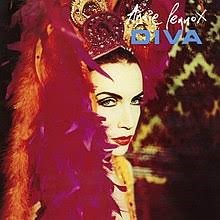
Annie Lennox Best Albums: The complete guide
Introduction
Annie Lennox has captivated global audiences with her unmistakable contralto voice, fearless artistry, and boundary-pushing image. Across her decades-long career, she has become one of the most iconic figures in pop music. Whether commanding stages as part of the groundbreaking duo Eurythmics or forging her acclaimed solo path, Lennox continually redefined what it means to be a pop artist.
This complete guide to Annie Lennox Best Albums explores every studio album she released, both with Eurythmics and as a solo artist. From synth-pop anthems to soulful ballads and jazz reinterpretations, each album reflects her creative evolution. Along the way, we’ll also answer some of the internet’s most frequently asked questions about Annie Lennox’s music, voice, and legacy.
The Eurythmics Era: A Synth-Pop Powerhouse
Before launching her successful solo career, Annie Lennox rose to fame as one half of the iconic duo Eurythmics, alongside musician and producer Dave Stewart. Formed in 1980, Eurythmics combined Lennox’s distinctive contralto voice and striking image with Stewart’s experimental production. Together, they created a pioneering synth-pop sound that influenced the 1980s music scene and beyond.
The duo released eight studio albums during their career:
- In the Garden (1981)
- Sweet Dreams (Are Made of This) (1983)
- Touch (1983)
- Be Yourself Tonight (1985)
- Revenge (1986)
- Savage (1987)
- We Too Are One (1989)
- Peace (1999) — their reunion album
Eurythmics blended electronic innovation with soulful melodies. Their early work leaned heavily on synths, while later albums incorporated rock and R&B influences. Notably, Lennox co-wrote most songs with Stewart, shaping the duo’s distinctive sound.
Some of Annie Lennox’s most famous songs came from this period, including the unforgettable “Sweet Dreams (Are Made of This),” “Here Comes the Rain Again,” and “Would I Lie to You?” These tracks showcase her powerful voice and lyrical depth.
Lennox’s evolving image during the Eurythmics era helped cement her as a pop icon. From the androgynous look in Sweet Dreams videos to glamorous sophistication later on, she continually challenged norms and captivated audiences.
This section will explore each Eurythmics album’s contribution to their legacy and highlight the tracks that defined an era.
In the Garden (1981)
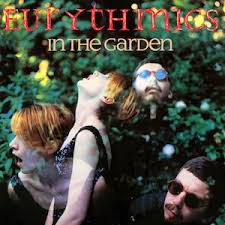
Eurythmics debuted with In the Garden, a moody, atmospheric collection recorded in Germany with producer Conny Plank. The album fused art rock with post-punk textures, laying the foundation for what would come later. Although it didn’t break into charts globally, it hinted at their future potential.
Songs like “Never Gonna Cry Again” introduced Annie Lennox’s distinct vocal tone. Even on this early release, her presence dominated each track. While not one of the commercial Annie Lennox Best Albums, it remains a crucial starting point in the Annie Lennox Best Albums timeline.
Unlike their later polished pop, this album features experimental production, layered synths, and haunting vocal harmonies. The abstract songwriting style stands in contrast to their more accessible hits that followed. However, it allowed Lennox and Stewart to find their artistic voice.
Though overlooked by many fans, In the Garden deserves recognition for launching one of the most successful musical duos of the '80s. Without it, the world might never have experienced the synth-pop brilliance that came next. In short, this album was the creative seed that would soon blossom into global stardom
Sweet Dreams (Are Made of This) (1983)

Sweet Dreams (Are Made of This) transformed Eurythmics into international superstars. The title track became a cultural landmark, turning Annie Lennox into a visual and musical icon. Her sharp orange hair, tailored suits, and piercing stare in the video created one of the most unforgettable images of the 1980s.
This second entry in the list of Annie Lennox Best Albums blends icy synthesizers with haunting melodies and emotional intensity. The hit single “Sweet Dreams (Are Made of This)” topped charts globally. Yet the album offers more than just its legendary title track. Songs like “Love Is a Stranger” and “The Walk” reveal deeper layers of vulnerability and experimentation.
Crucially, Annie Lennox co-wrote the entire album with Dave Stewart. This reinforced her reputation not just as a powerful vocalist, but also as a visionary songwriter. While Stewart handled much of the instrumentation and production, Lennox’s voice guided the emotional weight of every track.
Moreover, the album established Eurythmics' signature blend of cold electronic production with warm human feeling. Even as synthesizers dominate the mix, Lennox injects soul into every word. This juxtaposition helped define the early '80s pop landscape.
In discussions of Annie Lennox Best Albums, this release always ranks near the top. It brought us some of her most famous songs and marked a breakthrough for electronic music in mainstream pop. Every element, from its production to its visual aesthetic, shaped pop culture for years to come.
Without Sweet Dreams, the Annie Lennox legend may never have materialized. With this album, she didn't just arrive—she electrified the music world.
Touch (1983)

Released just months after Sweet Dreams, Touch showcased Annie Lennox at her creative peak. The album built on their synth-pop foundation while introducing richer instrumentation and more emotional depth. In the ongoing story of Annie Lennox Best Albums, Touch ranks as one of her boldest and most dynamic works.
“Here Comes the Rain Again” opens the album with sweeping orchestration and melancholic vocals. This haunting track became one of Annie Lennox’s most famous songs and a defining moment of the Eurythmics catalog. Yet the album doesn't rest on one hit. Tracks like “Who's That Girl?” and “Right by Your Side” offer rhythmic diversity and experimental flair.
Although synth-driven, Touch integrates horns, strings, and even calypso elements. This marked a shift from the colder tones of Sweet Dreams toward a more layered, genre-blending sound. Throughout the album, Lennox’s contralto range shines, adding power and soul to every phrase.
Notably, the lyrics across Touch reflect greater introspection and social observation. Lennox began weaving themes of identity, gender, and vulnerability into her writing—elements that would become hallmarks of Annie Lennox Best Albums in both group and solo efforts.
Visually, Lennox continued to break barriers. In the “Who's That Girl?” video, she wore a man’s suit and side-parted wig opposite her feminine self—subverting gender norms in a bold, artistic statement. This kind of visual storytelling became part of her enduring appeal.
Ultimately, Touch solidified Lennox’s status as more than a pop star. She was a risk-taker, a boundary-pusher, and an artist with a unique voice—in every sense. As a follow-up to Sweet Dreams, it exceeded all expectations and proved Annie Lennox’s creative momentum was unstoppable.
Be Yourself Tonight (1985)
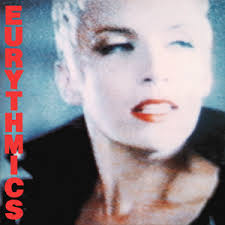
Be Yourself Tonight marked a pivotal shift in Annie Lennox’s artistic evolution. Departing from the heavily synthesized textures of earlier releases, this album introduced a soulful, rock-infused sound. It stands tall among Annie Lennox Best Albums because it revealed a powerful new dimension of her vocal and emotional range.
Lead single “Would I Lie to You?” delivered a fierce burst of rock energy. Annie Lennox commanded every note with unrelenting charisma. The track became one of her most famous songs and a staple of mid-1980s pop. Just as notably, the album includes “There Must Be an Angel (Playing with My Heart),” featuring Stevie Wonder on harmonica. That song soared to number one in the UK.
Yet Be Yourself Tonight doesn’t rely on just a few hits. Tracks like “Sisters Are Doin’ It for Themselves” (a duet with Aretha Franklin) and “It’s Alright (Baby’s Coming Back)” added feminist messaging and genre diversity. The entire album radiates confidence and empowerment.
Lennox's vocal performance across the album is nothing short of commanding. Her delivery ranges from tender restraint to full-throated soul, proving her versatility and technical prowess. It’s no surprise this album is frequently listed among Annie Lennox Best Albums due to its vocal mastery and cultural significance.
Lyrically, the songs explore independence, desire, and resilience. The themes felt more grounded than the abstract ideas of previous releases. This grounded approach resonated with a broader audience and expanded Eurythmics’ global fanbase.
With Be Yourself Tonight, Annie Lennox didn’t just evolve—she exploded into new creative territory. The result? A career-defining album that blended pop accessibility with fearless artistry.
Revenge (1986)
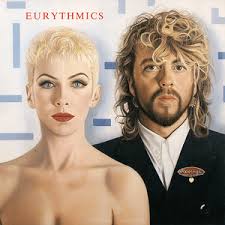
Revenge found Annie Lennox and Dave Stewart leaning deeper into arena rock. While the synth-pop elements remained, this album embraced stadium-ready guitars and anthemic choruses. As one of the louder, bolder entries in the Eurythmics catalog, it earns a solid place among the Annie Lennox Best Albums.
“Missionary Man” kicks off with gritty guitar and harmonica, announcing a new, tougher direction. The track earned a Grammy and became a defining hit. Annie Lennox’s vocals slice through the mix with unapologetic intensity. She sounds fearless, fierce, and absolutely in control.
Throughout the album, Lennox continues to experiment vocally. On “Thorn in My Side,” she channels wounded strength, while “When Tomorrow Comes” shows her at her most uplifting. These performances add emotional texture and showcase the full power of her contralto range.
Visually and sonically, Revenge amplified everything. Lennox adopted a leather-clad, rock-warrior look that aligned with the album’s harder sound. This reinvention proved she was never content to stand still—another reason Revenge remains a fan favorite when listing Annie Lennox Best Albums.
Despite its bombast, the album retains lyrical depth. Themes of betrayal, resilience, and self-reliance run throughout. Lennox continued to weave personal emotion into songs without ever sacrificing catchiness or production polish.
While critics were initially mixed, the album has aged well. It reflects the duo’s ability to adapt and thrive in a rapidly changing pop landscape. For many, Revenge is the perfect blend of Lennox’s raw emotion and Stewart’s polished craftsmanship.
Ultimately, Revenge stands as proof that Annie Lennox could dominate any genre she touched—and do it with style, swagger, and soul.
Savage (1987)

Savage stands as one of the most daring and experimental albums in the Annie Lennox discography. After the commercial success of Revenge, Annie Lennox and Dave Stewart stripped things back—this time returning to a more electronic, introspective sound. For many fans and critics, Savage is one of the Annie Lennox Best Albums due to its fearless creativity and emotional depth.
Unlike its rock-heavy predecessor, Savage leans into icy synthesizers and spoken-word segments. “Beethoven (I Love to Listen To)” opens the album with eerie tension, blending spoken narrative with unsettling synths. Meanwhile, “You Have Placed a Chill in My Heart” showcases Lennox’s ability to blend vulnerability with strength—hallmarks of all Annie Lennox Best Albums.
This album also introduced a complex visual element. The music videos from Savage featured Annie Lennox in various personas—from a desperate housewife to a fierce dominatrix—challenging expectations and pushing artistic boundaries. The visuals weren't just accessories; they expanded the emotional meaning of the songs.
Lyrically, Savage dives into identity, repression, and inner conflict. Lennox bares her soul here, often with unsettling honesty. Though less radio-friendly than previous albums, the emotional resonance runs deeper.
Critics now recognize Savage as a misunderstood masterpiece. It didn’t spawn as many chart-toppers, but it cemented Lennox’s place as an artist willing to challenge the status quo. Her vocal performances are haunting, raw, and unforgettable.
Ultimately, Savage might not be the most commercial of Annie Lennox’s works, but it is certainly one of the most important. It stands tall as a defining moment of personal and creative expression, proving again why it belongs among the Annie Lennox Best Albums.
We Too Are One (1989)
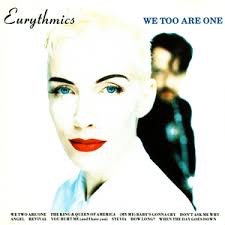
We Too Are One marked the final album of the original Eurythmics run, closing a decade of innovation. Annie Lennox and Dave Stewart returned to a more polished pop-rock style, fusing their earlier synth roots with mature songwriting. This album deserves its place among the Annie Lennox Best Albums for its elegant craftsmanship and emotional resonance.
The opening track, “We Two Are One,” sets a rich, melodic tone. Annie Lennox’s voice carries warmth and power, offering a confident embrace of unity and connection. Soon after, “Don’t Ask Me Why” brings reflective melancholy, balanced by precise instrumentation and Lennox’s unmistakable vocal depth.
Although this album didn’t produce global mega-hits like Sweet Dreams, it contains fan favorites that highlight Lennox’s versatility. “The King and Queen of America” delivers biting satire, while “Angel” soars with spiritual vulnerability. Both songs strengthen the album’s case as one of the Annie Lennox Best Albums.
Throughout We Too Are One, Lennox explores identity, disillusionment, and hope. Her lyrics feel personal but universal—delivered with lyrical sophistication and vocal clarity. She rarely sounded more assured or more emotionally invested.
Visually, the album era saw Lennox adopt a softer, more refined image. Gone was the androgynous boldness of earlier years. In its place: subtle elegance and quiet authority. This shift reflected the maturity in both sound and theme.
Although this would be Eurythmics’ final album until their reunion a decade later, it provided a fitting close. It blended the duo’s strengths—emotive songwriting, genre versatility, and commanding vocals—into a graceful farewell.
Ultimately, We Too Are One was less about reinvention and more about reflection. That introspective quality cements its position among the most memorable Annie Lennox Best Albums.
Peace (1999)

After a decade-long break, Annie Lennox and Dave Stewart reunited as Eurythmics for Peace. This comeback album aimed to blend their classic sound with mature, socially conscious themes. While it wasn’t a chart juggernaut, Peace deserves mention among the Annie Lennox Best Albums for its sincerity, warmth, and reflective spirit.
The album opens with “17 Again,” a shimmering pop anthem that nods to their past while embracing growth. Lennox sings with nostalgia and insight, effortlessly reminding listeners of her timeless vocal magic. Then comes “I Saved the World Today,” a beautiful piano-led ballad. Lennox delivers it with haunting grace, making it a highlight across all Annie Lennox Best Albums.
While earlier albums leaned into reinvention, Peace takes a subtler approach. Tracks like “Peace Is Just a Word” and “Beautiful Child” offer thoughtful commentary on conflict and innocence. Annie Lennox’s voice remains the emotional anchor—every word lands with purpose and depth.
Sonically, the album fuses gentle electronic textures with acoustic instrumentation. This creates a more organic feel than their '80s output. It’s not flashy, but it resonates, especially with longtime fans who followed Lennox’s journey.
Importantly, the album’s release coincided with the duo’s humanitarian efforts. Their “Peacetour” raised funds for Amnesty International and Greenpeace, underlining Lennox’s commitment to global issues. This activism only enhances the album’s meaning and solidifies her influence.
While Peace didn’t aim to break new ground, it offered a meaningful return—a chance for reflection, reunion, and artistic continuity. It reminded fans why Eurythmics mattered, and why Annie Lennox still stood at the heart of meaningful pop.
For these reasons, Peace rightfully earns its spot among the most essential Annie Lennox Best Albums.
The Solo Albums
1. Diva (1992)

Diva marked Annie Lennox’s triumphant solo debut. After a decade with Eurythmics, she stepped into her own spotlight and delivered a masterwork. Many consider Diva the pinnacle of the Annie Lennox Best Albums due to its emotional range, vocal power, and artistic identity.
Opening with “Why,” Lennox immediately sets the tone—vulnerable yet commanding. Her contralto voice aches with truth as she unpacks heartbreak and self-reflection. This track alone cemented her place among pop’s great solo performers.
Then comes “Walking on Broken Glass,” an elegant, baroque-infused pop anthem. Its cinematic music video matched the song’s drama, while Lennox’s voice soared with theatrical intensity. “Precious” and “Little Bird” followed, blending synth-pop with deeply personal lyrics. Each track showcased a new dimension of her artistry.
Importantly, Lennox wrote or co-wrote nearly every song. Diva wasn’t just a vocal showcase—it was a declaration of creative independence. That personal touch makes it stand apart, solidifying its place among the finest Annie Lennox Best Albums.
Visually, Lennox embraced and redefined femininity. With androgyny in her past, she now wore opulent gowns, referencing classic Hollywood glamour. This reinvention aligned with the album’s rich soundscapes—lush, layered, and emotionally charged.
Critics praised the album's sophistication, while fans embraced its maturity and depth. It earned multiple Brit Awards and went quadruple platinum in the UK. In the US, it was nominated for Album of the Year at the Grammys—an impressive feat for a debut solo effort.
Ultimately, Diva became more than just an album. It was a rebirth. Lennox proved she could captivate audiences without compromise, and without Dave Stewart. She didn’t just survive solo—she thrived.
There’s no doubt: Diva remains a cornerstone of the Annie Lennox Best Albums collection.
2. Medusa (1995)

Medusa showcases Annie Lennox’s remarkable ability to reinterpret classic songs with fresh emotion and style. Unlike her previous albums, Medusa is a collection of covers, making it unique among the Annie Lennox Best Albums. Yet, it shines because Lennox transforms familiar tunes into deeply personal statements.
The album opens with a powerful rendition of “No More ‘I Love You’s,’” which became a solo signature hit. Her soulful voice captures vulnerability and strength simultaneously, breathing new life into the song. This track alone helped secure Medusa’s place in the Annie Lennox Best Albums lineup.
Lennox carefully selected songs that reflected themes of love, loss, and resilience. Her take on “A Whiter Shade of Pale” honors the original’s haunting beauty, while “I Put a Spell on You” bristles with raw intensity. She infuses each cover with her contralto’s unique warmth and authority.
Importantly, Medusa highlights Lennox’s vocal versatility. Across the album, she moves effortlessly between tender softness and powerful belting. This dynamic range elevates every track, demonstrating why her voice remains one of the most respected in popular music.
The production complements her vocals perfectly, combining lush orchestration with subtle electronic elements. This balance keeps the album fresh while paying homage to the original compositions.
Critics generally praised Medusa for its artistry and emotional depth. The album achieved commercial success worldwide, proving that covers, when handled with care, can become essential parts of an artist’s catalogue.
Overall, Medusa confirms Annie Lennox’s status as a vocalist who can make any song her own. It firmly belongs on any list of Annie Lennox Best Albums.
3. Bare (2003)

Bare represents a deeply personal and introspective chapter in Annie Lennox’s solo career. It stands out among the Annie Lennox Best Albums for its raw emotional honesty and stripped-back sound, revealing a vulnerable side of Lennox rarely heard before.
The album opens with “Wonderful,” a hopeful yet reflective song that sets the intimate tone. Lennox’s voice feels close and tender, inviting listeners into her world. This theme of introspection continues in “Losing My Truth,” which explores heartbreak with poetic lyricism and simple piano arrangements.
Throughout Bare, Lennox embraces minimalism. The sparse instrumentation allows her contralto voice to shine, highlighting every nuance and emotion. This approach contrasts with the lush production of earlier albums, giving Bare a quiet strength.
Songs like “Pavement Cracks” and “Shining Light” showcase Lennox’s ability to balance melancholy with resilience. She confronts pain and growth with poetic grace, further proving why Bare deserves its place among the Annie Lennox Best Albums.
Visually, the album’s artwork and videos reflect this vulnerability. Lennox appears stripped down, both literally and figuratively, emphasizing the album’s themes of honesty and renewal.
Critics acknowledged Bare as a mature work, praising Lennox’s songwriting and vocal performances. Though not as commercially successful as Diva, it resonated deeply with devoted fans.
Ultimately, Bare stands as a testament to Annie Lennox’s artistic courage. It reveals the power of simplicity and truth, solidifying its status among the most compelling Annie Lennox Best Albums.
4. Songs of Mass Destruction (2007)

Songs of Mass Destruction marked Annie Lennox’s return after a four-year hiatus, blending personal themes with broader social commentary. This album ranks highly among the Annie Lennox Best Albums due to its passionate lyrics and powerful vocal delivery.
The album opens with “Dark Road,” a haunting track that sets a contemplative mood. Lennox’s contralto voice carries both strength and fragility, drawing listeners into her narrative. The song signals a maturity and depth consistent throughout the album.
Tracks like “Four Walls” and “Mandela Day” showcase Lennox’s commitment to humanitarian causes. “Mandela Day,” inspired by Nelson Mandela, celebrates resilience and hope. These songs reveal how Lennox uses her music to address both intimate emotions and global issues.
Musically, the album fuses rock, pop, and soul influences, creating a diverse yet cohesive sound. Lennox experiments with electronic textures while maintaining a strong melodic core. This balance enhances the album’s emotional impact, reinforcing its place in the Annie Lennox Best Albums.
“Into the West,” featured in The Lord of the Rings: The Return of the King, earned an Oscar for Best Original Song. Lennox’s heartfelt performance on this track adds a layer of cinematic grandeur to the album’s legacy.
Critics praised Songs of Mass Destruction for its thoughtful songwriting and Lennox’s expressive vocals. Fans appreciated her continued artistic evolution and willingness to tackle challenging themes.
In conclusion, Songs of Mass Destruction stands out as a significant chapter in Annie Lennox’s career. It combines personal introspection with activism, securing its spot among the essential Annie Lennox Best Albums.
5. A Christmas Cornucopia (2010)
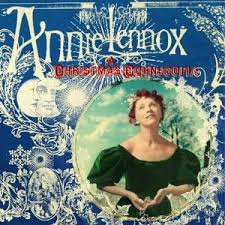
Annie Lennox Best Albums wouldn’t be complete without A Christmas Cornucopia. This festive album showcases Lennox’s ability to reinterpret traditional songs with both reverence and fresh emotion. It stands apart for its unique seasonal focus and warm vocal delivery.
The album opens with a haunting rendition of “God Rest Ye Merry Gentlemen.” Lennox’s contralto voice adds a soulful depth, giving this classic carol a modern, contemplative edge. She breathes new life into each track, transforming familiar melodies into heartfelt experiences.
Throughout the album, Lennox blends traditional instrumentation with subtle, contemporary arrangements. Songs like “Silent Night” and “Snowman” offer moments of quiet beauty, while “Coventry Carol” carries a darker, more dramatic tone. This balance creates a rich and varied listening experience.
Lennox personally produced the album, ensuring her artistic vision remained clear and consistent. Her passion for the material shines through every note. Importantly, the album reflects her deep connection to the holiday spirit without feeling clichéd or commercialized.
Critics responded positively, praising the album’s authenticity and Lennox’s vocal performances. Fans embraced it as a fresh addition to holiday music collections worldwide.
Annie Lennox Best Albums fans appreciate A Christmas Cornucopia for its unique place in her discography. It reveals her versatility and respect for musical traditions, adding a seasonal treasure to her impressive catalogue.
6. Nostalgia (2014)

Nostalgia finds Annie Lennox embracing the timeless charm of jazz and blues standards. This album stands out in the Annie Lennox Best Albums collection for its elegant reinterpretations and warm, mature vocals.
From the first track, “I Put a Spell on You,” Lennox captures the sultry mood of the classics. Her contralto voice flows effortlessly, balancing intimacy with power. She honors the originals while making each song distinctly her own.
The album’s arrangements combine lush orchestration with subtle modern touches. Songs like “Summertime” and “Stormy Weather” showcase Lennox’s expressive phrasing and emotional depth. This sophisticated production highlights her artistic evolution.
Nostalgia also reflects Lennox’s deep respect for music history. By choosing songs from legendary artists, she connects past and present with grace and authenticity. This approach makes the album a standout in her solo discography.
Critics praised Nostalgia for its vocal excellence and tasteful interpretations. Fans appreciated the fresh take on well-loved standards, cementing the album’s place among the Annie Lennox Best Albums.
Although released in 2014, Nostalgia continues to influence listeners, showcasing Lennox’s enduring artistry. It confirms her ability to reinvent herself while staying true to her unique style.
In summary, Nostalgia adds a refined, heartfelt chapter to Annie Lennox’s legacy, earning a deserved spot among the finest Annie Lennox Best Albums.
Beyond the Albums: Annie Lennox’s Legacy
Annie Lennox’s influence extends far beyond her impressive discography. Renowned for her rich contralto vocal range, she captivates listeners with emotional power and unique tone. Her ability to blend soulful intensity with pop sensibility has inspired countless artists across genres.
As part of Eurythmics, Lennox helped define the synth-pop era, combining innovative production with striking visual style. Her iconic image and fearless artistry challenged gender norms and redefined female presence in popular music.
In her solo career, Lennox continued to evolve artistically while dedicating herself to humanitarian causes. She actively supports global issues such as HIV/AIDS awareness and women’s rights, using her platform to amplify vital messages.
Throughout her career, Lennox has earned numerous accolades, including multiple Grammys, Brit Awards, and an Oscar for “Into the West.” These honors recognize both her musical excellence and her social impact.
Ultimately, Annie Lennox’s legacy lies in her enduring voice, fearless creativity, and commitment to positive change. Her contributions solidify her place among the most influential artists in modern music history.
Annie Lennox’s musical journey spans decades of innovation, powerful vocals, and heartfelt songwriting. From her groundbreaking work with Eurythmics to her compelling solo albums, she has continually redefined artistry and authenticity. The Annie Lennox Best Albums reflect her versatility, emotional depth, and enduring influence.
While her last studio album, Nostalgia (2014), showcased her ability to reinterpret classics, Lennox remains active in music and humanitarian efforts today. Her legacy inspires new generations of artists and fans worldwide.
This complete guide celebrates her remarkable career and invites you to explore the rich catalogue that defines Annie Lennox’s place in music history.
Recent Posts
Queen studio albums: A Review
Phil Collins Albums Ranked & Reviewed – Complete Guide to Every Studio Album
The best of Massive Attack
Let’s Make Magic
Book Your Event DJ Now




